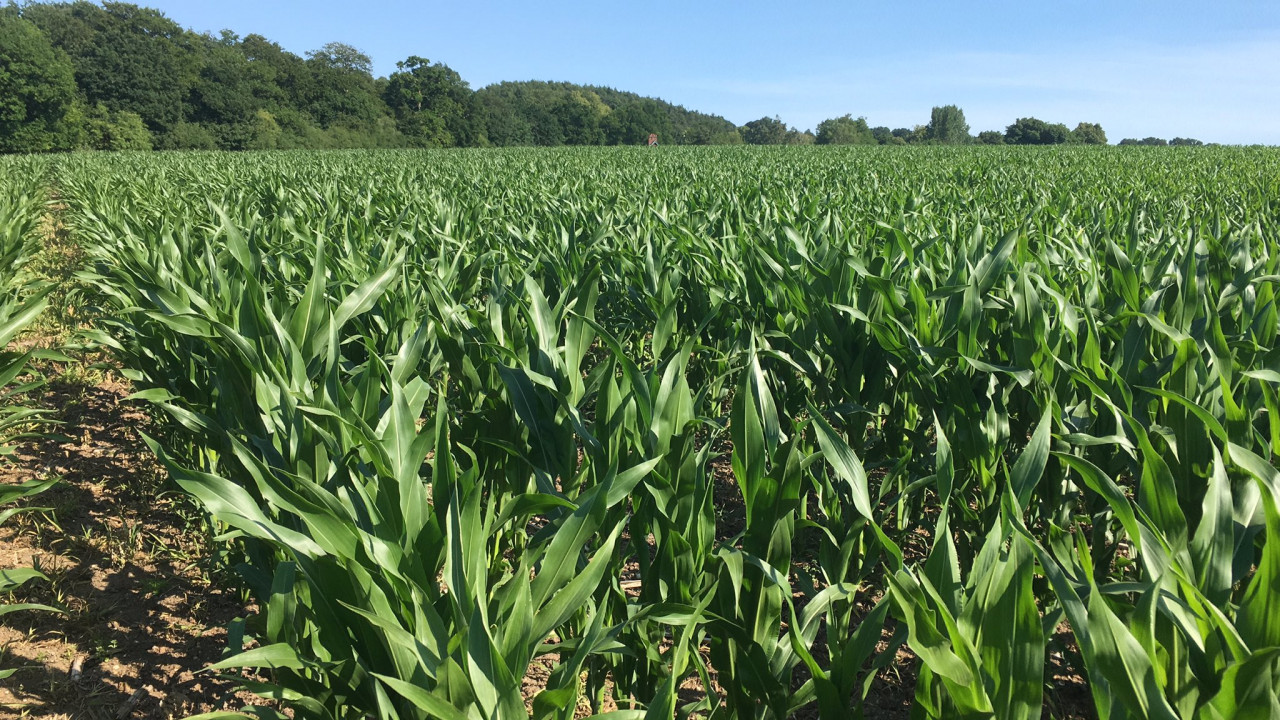Crop nutrition considerations for maize
Earlier this year, we published a blog about the benefits of growing maize in your 2024 rotation and how the crop can deliver a gross margin equal to a first wheat. We mentioned the positive market opportunities for home-grown maize and the Sustainable Farming Incentive actions that could be incorporated with the crop.
In light of the challenging weather we've faced this winter and early spring, maize could be a great alternative cropping option. Whilst maize can be a very successful crop, it will need looking after just like any cereal crop. In this blog, we'll be highlighting what you can do nutrition-wise to ensure your maize crop receives the boost it needs early on to perform well further down the line.
Replacing depleted nutrients
Even though you are likely to have a fertiliser plan in place for the maize, there is no doubt that due to the unprecedent amount of rainfall there are particular nutrients that will have leached over winter and early spring.
We know that maize tends to have most of its nutrition front loaded, even before the crop is growing. So, what considerations do we need to make for the maize of 2024?
The first thing to do is get a clear understanding of what exactly has been lost and conduct a "crop nutrition check". This blog outlines how best to monitor crop health as we enter the period of peak applications.
Nitrogen
As with all crops this year, residual nitrogen will have been significantly reduced following excess rainfall. We've been recommending that farmers consider reviewing the potential soil nitrogen supply (SNS) to the crops. In some instances, this review may lead to an increase of as much as 30kg/ha in nitrogen applications.
It's therefore important to consider total nitrogen rate as you look at finalising nitrogen fertiliser plans over the coming weeks.
Sulphur
Nitrogen is understandably the first point of call when thinking about replacing lost nutrients related to high rainfall. However, it's vital to not forget the other nutrients. We mentioned in this blog about early nutrition strategies for winter cereals that sulphur behaves similarly to nitrogen – the same principle will apply to maize too.
In some autumn cereal crops, where sulphur has leached from the soil and not been applied, we're starting to see visual effects on the plants. Paling of new foliage is becoming apparent and although maize hasn't emerged yet, there will likely be a high risk of the crop suffering from the lack of sulphur too.
The table below outlines our recommendations for the amount of sulphur to apply depending on soil type and rainfall.
Potassium
Potassium plays a huge role in maize as it is responsible for internal water movement, alongside drought resistance and protein/starch formation.
Although not as mobile as nitrogen and sulphur, potassium is likely to have been impacted by excess winter rainfall so it's possible this nutrient will have moved down through the soil profile and now beneath the early rooting zone.
Phosphates
While phosphates don't leach the same as nitrogen, sulphur or even potassium, its availability is very reliant on soil temperature, moisture and pH. Given its importance for establishment and rooting you should always check the soil index to understand how much to apply to meet this early season demand. Along with fertiliser applications, early post-emergence foliar phosphate can be very beneficial to fuel early growth.
The role of biostimulants
During 2023, the Maize Growers Association (MGA) carried out nutritional trials on forage maize, comparing urea polymers to each other and against a reduced nitrogen programme.
In these MGA managed trials, Nutrino Pro outperformed other urea polymer product options on the following elements:
- Dry matter yield
- Starch
- ME (metabolizable energy)
- CWD (Cell wall digestibility)
Although all these products (including Nutrino Pro) contain the same nitrogen forms at different percentages, it's the additional components of Nutrino Pro in the form of magnesium and sulphur, alongside biostimulants R100 and pidolic acid, that have delivered the additional maize yield and quality.
Of further interest was that in this trial, even at a half rate, Nutrino Pro outperformed other products on the above parameters.
These staggering results highlight the power of foliar nutrition in conjunction with biostimulants and the positive outcomes they can bring in terms of increased nutrient use efficiency.
Summary
We know it's been difficult to get out in the field to make applications and the weather continues to remain as unpredictable as ever. However, maize ground preparation has started and early planting is underway in some areas. It's therefore a key time to consider addressing the potential nutrient deficiencies mentioned above - your maize crop will thank you for it!
It's about making adjustments which will be dependent on plantings, timings and of course, the weather.
If you have any questions about the nutrition management of your maize crop, please speak to your local Frontier contact. Alternatively, you can get in touch with the nutrition team here.
As a subscriber, you’ll receive email alerts each time a new blog is published so you can always stay updated with the latest advice and insights from our experts







Comments